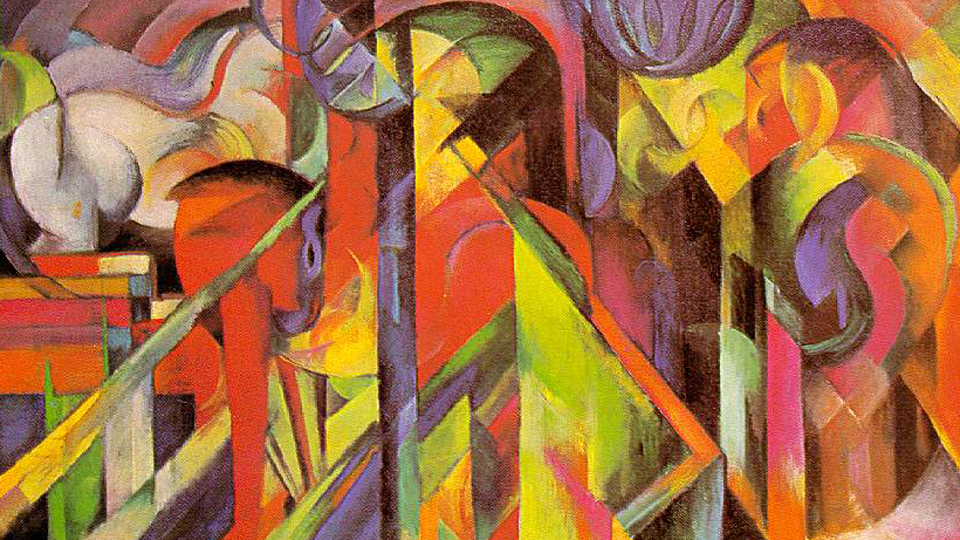The Great Upheaval: Masterpieces from the Guggenheim Collection is a selection of pieces taken from the selection that Guggenheim made. There’s a potential for things to be a little fragmented. But in reality, The Great Upheaval is touching, risky, and immersive, grounded in the historical context of the art. The exhibit covers art created between 1910 and 1918, right in the middle of the Balkan War and World War I.
In the first gallery, the paintings possess a distinctive “f*** you” attitude, reflecting the artists who decided that art could be made in any colour and on any subject, rejecting the realism and tendency towards intricate detail that preceded them. Echoing the unprecedentedly rapid mechanization and industrialization that was then taking the world by storm, the art from this pre-war period is about experimentation and play.
One piece that particularly stands out is Kandinsky’s “Sketch for Composition”, which is more about shape and colour than about telling a specific story. At first glance, the painting is chaos, smashing together colours that ought not sit beside one another and spacing them with patches of white. Slowly, though, these seemingly random colours and forms begin to stand out as little vignettes scattered on the canvas: a house, a person, someone on a horse jumping over an obstacle. “Colour directly influences the soul,” said Kandinsky, and indeed it does here, drawing the eye and holding it. It takes courage to produce a painting like this one and be proud of the outcome.
The first two years or so covered by the show prove especially interesting because of the atypical thinking that seems to be required. It’s all very well to see something beautiful and decide to capture it with paint, as faithfully to the original inspiration as possible on a two-dimensional surface. Here, I found myself asking where these artists found the inspiration to represent an object or scene not as it is but as it’s not.
By 1913 not everything is as cheerful as it was. Boccioni, for instance, produced a sculpture only a few years before his death called “Development of a Bottle in Space”, which looks almost nothing like a bottle. Rather, it’s an object in the midst of being formed, a coming together of materials into something solid and useful. This can be read in the opposite sense as well: what if it’s actually a bottle coming apart, the beginning of the end, starting with everyday objects?
Similarly, Gutfreund’s sculpture “Embracing Figures” just as easily might have been called “Pile of Rocks”. Without the title, I wouldn’t have known that it depicted two people entwined in a passionate embrace. With the title, the piece seemed more about human contact in the face of pain than pure, pastoral love.
My favourite piece in the exhibit was “The Italian Woman” by Matisse. This painting appears in the final gallery, dedicated to the final two years or so of WWI. The woman in this painting has a dead, flat, deflated look. She stares out of the canvas as if she’ll never be happy again. One of her shoulders has been covered by a fold of the drab beige wall behind her, and the wall seems to wrap its arms of shadow around her body. By no means an optimistic portrait, it struck me the hardest of all, leaving me with a harrowing, haunting impression that reflected both the world’s and the artist’s state at the time.
The Great Upheaval runs until March 3 at the Art Gallery of Ontario.



